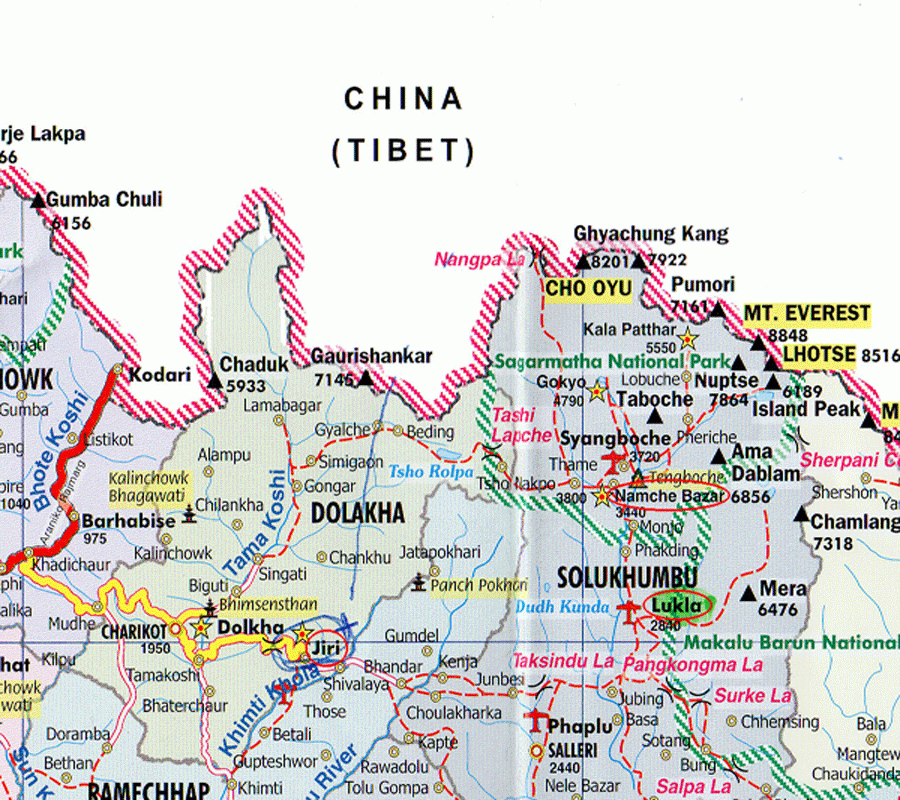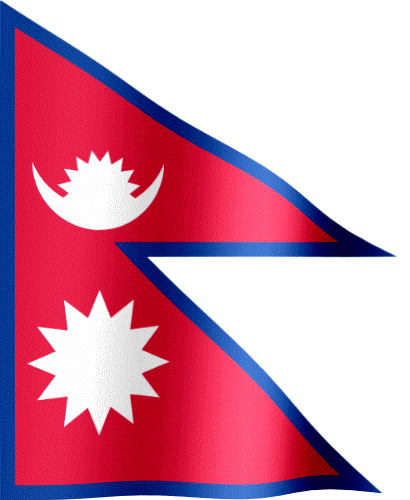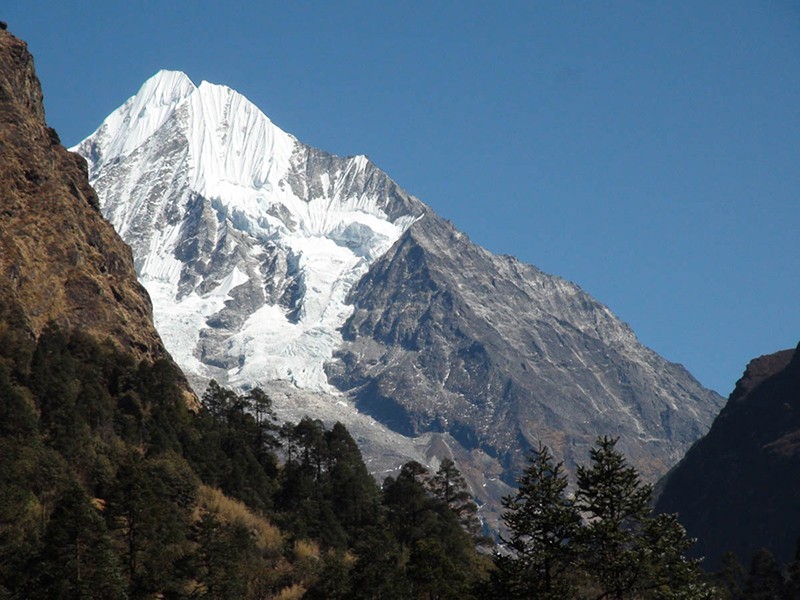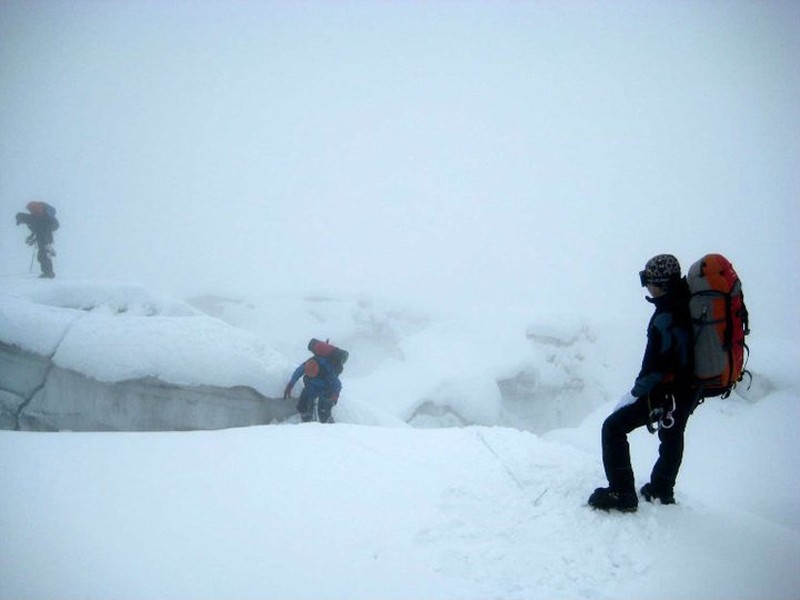Reference Code: MCKNP
Trip Start: Kathmandu
Trek Start: Singati Bazaar
Trek Days: 23 Days
Peak Climbing Period: 10 days
Maximum Altitude: 6257m.
Age: 20-60
Season: Spring and Autumn
Accommodation: Camp
Service: Full Board
Destination: Nepal
Trip End: Kathmandu
Trek End: Singati Bazaar
Trip Durations: 27 days
Peak Grade: Extreme
Physical Rating: Strenuous
Group Size: 2-10
Theme: Expedition
Meals: Standard
Mt. Chekigo Peak (6257m), also called Mt. Chekijo, is one of the newly opened trekking peaks in Nepal. Located between Khumbu and Rolwaling Valley. The peak is surrounded by other popular peaks, such as Mt. Gaurishankar (7134m), Mt. Tengi Ragi Tau (6943m), Mt.Dragkar Go (6793m) and Mt. Bisphero Go Shar 6729m among others.
As compared to other peaks, Chekigo is one of the least climbed trekking peaks in Nepal and hence journey to the peak takes you into off the beaten path. In terms of challenge, Mt. Chekigo offers double whammy for real adventure seekers.
The push to the summit of Mt. Chekigo will be launched from the base camp at 5400m. A minimum of two camps will be prepared before final leg to the summit. Climbers will have to negotiate through a bundle of snow, ice and rock.
Much of the trekking will be through Rolwaling Valley that will offer a plethora of cultural and natural attractions. Prepare for some wild adventure into the pristine biodiversity and a land of unique hospitality.
Day 01 Arrival in Kathmandu
Namaste! And welcome to Kathmandu, the colourful capital of Nepal where ornately carved balconies mingle with beautiful shrines and temples. Your adventure begins with a welcome meeting on arrival at the exit gate of Kathmandu airport. Our staff will welcome you and pick you to your accommodated hotel. Please seek our company palmplate to find our staff at the main exit gate of the airport. Rest of the day you can relax at the hotel or short evening walk around local market on your own as per your wish.
Approximate Driving Hours: 30 minutes
Accommodation: Hotel
Meals include: None
Day 02 Rest, NMA peak permit issue and preparation day
A well deserved rest day at cosy of hotel after a long tiring flight. This day, one can move around nearby local market to purchase or hire trekking equipment that is necessary for the trekking like sleeping bags, walking sticks etc, exchange currency as requirement or simply walk around in the local market or Kathmandu Durbar squire nearby with small entrance fee as per your preference on your own. In this day our staff will issue NMA Peak climbing permit. Evening at the hotel lobby there will be pre-trip briefing in which you will be introduced with your trekking guide and explained about your trip in short, instruction for safety etc.
Accommodation: Hotel
Meals include: Breakfast
Day 03 Drive to Singati Bazaar 1660m.
After breakfast we leave Kathmandu with tourist bus altogether with Nepalese staffs to Singati Bazaar via Charikot. The driving route is full of scenic hill and typical Nepalese village with paddy field. The road to Charikot bazaar is in good condition and after that the road get dusty and bumpy. After reaching Singati bazaar we camp overnight. If time gets too dark then we can stay in lodge for this night but food will be provided from our own camp.
Driving Hours: 7-8 hours
Altitude gain/loss:
Accommodation: Camp
Meals include: Breakfast, Lunch and Dinner
Day 04 Trek to Jagat 1150m.
Through Bhote Koshi river, Pass fir hamlets, and villages walking through a forest, we will get a chance to see Gauri Shankar Himal (7145m). From Shigati, we will head towards Jagat and spend the rest of the day there.
Walking Hours: 6-7 hours
Altitude gain/loss:
Accommodation: Camp
Meals include: Breakfast, Lunch and Dinner
Day 05 Trek to Simi Gaon 2020m.
Today, we will trek from Jagat to Simigaon (2020m.) taking around seven and half hours. In the beginning the path follows flat route after that it moves up and down through the forest. Number of villages comes on our way. Steeply making way up to Simigaon, we will reach at a village occupied by few Hindus and Buddhists. Overnight at Simigaon.
Walking Hours: 6 hours
Altitude gain/loss:
Accommodation: Camp
Meals include: Breakfast, Lunch and Dinner
Day 06 Trek to Dokhang 2790m.
We leave Simigaon and move down by a gentle slope and trek around the ridge by ascending up the steep stony steps. Now we go into the forested area on the edge, with some rising and falling path, very close to the Rolwaling River. After that, we again have steep way up through the woody area with glance of Gaurishankar and after the steep climb, the trail reaches to Dokhang.
Walking Hours: 7 hours
Altitude gain/loss:
Accommodation: Camp
Meals include: Breakfast, Lunch and Dinner
Day 07 Trek to Beding 3740m.
We will gradually climb the valley with good mountain scenery. Continuing the trek, we will go on until we come across the natural and flat terrain. Finally, we will reach to Bedding. We will visit the ochre-colored Gompa at Bedding, the largest village in the Valley.
Walking Hours: 5-6 hours
Altitude gain/loss:
Accommodation: Camp
Meals include: Breakfast, Lunch and Dinner
Day 08 Rest for AMS
We have a day rest today after a long day travel the day before. And also in order to properly acclimatize at the high altitude, we relax today. Alternatively, you can go around for sightseeing nearby.
Walking Hours: Depends on wish
Accommodation: Camp
Meals include: Breakfast, Lunch and Dinner
Day 09 Trek to Mt. Chekigo Base Camp
Walking Hours: 5-6 hours
Altitude gain/loss:
Accommodation: Camp
Meals include: Breakfast, Lunch and Dinner
Day 10-19 Climbing period of Mt. Chekigo 6257m.
or the first couple of days, there will be puja ceremony.
Ceremonies mark life. Many come with a birth of a child, a union of a couple or upon death. For the Sherpa, they will not climb mountains without one such ceremony, a Puja. Every sherpa people have a strong belief that each and every mountains abodes realm of gods and goddesses.
The Puja is an important ceremony where we pay respect to the mountain and offer blessings for safe passage before heading up onto Mountain.
Our Puja consisted of a Lama (Monk) and our entire crew participating in prayers, rice and flour throwing, and 3 sips of strong whiskey (just to name a few things from our 3-hour ceremony!). The stupa will be covered in beautiful decorations and sculptures made out of butter and tsampa, with plates full of food and drinks as offerings. It was incredible to witness and to be a part of.
We do forth and back to our various camps on the mountain to fit our body with high altitude and weather we face during the actual climbing. On the day of the summit, we walk early mid night from our final high camp so that we can reach the summit as early morning as possible so that we do get good weather to return too. As the day gets older, the weather in mountain starts to get voilent and we no one wants to be in mercy of the mountain. The time and the oxygen in our oxygen cylinder is very crucial on the day as summit is just the half way of our success. If any things gets serious(time, body fitness, Oxygen level...), there will always be next time if we live and it will be very wise decision to return back for the next day. After summit we will return back to our base camp.
Accommodation: Camp
Meals include: High altitude food/Breakfast, Lunch and Dinner
Day 20 Clean base camp and backtrack to Beding
Walking Hours: 4-5 hours
Altitude gain/loss:
Accommodation: Camp
Meals include: Breakfast, Lunch and Dinner
Day 21 Trek to Dokhang 2790m.
The trek now descends downhill through varieties of plants and Rhododendron trees. You trek over suspension bridges stretching over deep gorges in a few areas.
Walking Hours: 6 hours
Altitude gain/loss:
Accommodation: Camp
Meals include: Breakfast, Lunch and Dinner
Day 22 Trek to Simi Gaon 2036m.
On the route you come across picturesque Sherpa villages. The downhill trek is rich in different varieties of plants and Rhododendron trees. After the downhill trek you will then come across ascending and descending paths while enjoying the scenic beauty of the place.
Walking Hours: 6 hours
Altitude gain/loss:
Accommodation: Camp
Meals include: Breakfast, Lunch and Dinner
Day 23 Trek to Jagat 150m.
The first part of your trail follows a normal flat path, and then it descends and ascends through the jungle. At several places, you backtrack across suspension bridges. There are numerous villages on your way.
Walking Hours: 6 hours
Altitude gain/loss:
Accommodation: Camp
Meals include: Breakfast, Lunch and Dinner
Day 24 Trek to Singati Bazaar 950m.
Crossing a suspension bridge, you trek through normal flat land along the side of the river. You backtrack through rice terrace fields. There are small villages on your way which are inhabited by mixed communities. At several points, you cross jungles covered by orchid, few rhododendron trees and wild vegetation. This is the last day of our trip so at evening we will celebrate the success with all Nepalese staffs together
Walking Hours: 7 hours
Altitude gain/loss:
Accommodation: Lodge
Meals include: Breakfast, Lunch and Dinner
Day 25 Drive to Kathmandu
After an early morning breakfast, you drive from Shigati to Kathmandu.
Driving Hours: 7 hours
Altitude gain/loss:
Accommodation: Hotel
Meals include: Breakfast and Lunch
Day 26 Rest and final shopping day
This is the final day in Nepal. A chance to do some shopping, explore at leisure or merely relax by the hotel. We enjoy a final night together, reliving the trek and our extraordinary achievements.
Accommodation: Hotel
Meals include: Breakfast
Day 27 Final Departure
We say 'Namaste' for memories that will last a lifetime. There are no activities planned for today and you are able to depart the hotel at any time. Check out time from the hotel is at 12 noon. If you are departing later, you can arrange luggage storage at the hotel. For your final departure, our staff will pick you up from the hotel and transfer to Kathmandu airport approximately 3 hours prior to your international flight time.
Driving Hours: 40 minutes
Meals include: Breakfast
Inclusion
Camping Basis
All ground transportation as per itinerary
4 night hotel accommodation in Kathmandu with B/B plan.
TIMs (Trekking Information Management system) card
Gaurishankar National Park Entry fee
Peak climbing permit
Food for the members on camping basis
All camping equipment and camping charges
All required group climbing equipments( like fixed ropes, man rope, ice bar, ice screw.....)
All required Nepalese staffs including climbing support sherpa
Climbing support Sherpa equipments
All Nepalese staffs insurance
Company service charge and government taxes etc.
Exclusion
International flight with airport tax.
Nepalese Entry Visa fee
Food during stay in Kathmandu
All personal equipment and personal expenses
All personal climbing gears
Photography Charges, Monument charges and Monument entry fees
Personal Medical and travel insurance(must cover helicopter rescue evacuation cost)
Personal Medicine
Telephone and internet charges
Laundry charges
Alcoholic beverage, bottled drinks and cold drinks during the trip
Rescue evacuation charges if required
Staff and porters Tips...
Equipment List
This trekking equipment list has been prepared by Adventure Zambuling Treks (P) Ltd.
Climbing equipment:
» Climbing harness;
» One 3 metre/10 foot sling and three 2 metre/6 foot slings.
» Figure 8/Abseil belay device;
» 1 large mitten sized ascender (most members use the large petzl) and arm length leash;
» 2 locking carabiners, (1 large and 1 small)
» 4 regular carabiners;
» Good quality Ice axe with leash;
» Crampons - must fit boots perfectly. Steel crampons with anti-balling (anti-bot) plates are the best;
» Optional; Adjustable trekking poles;
Upper Body:
» 2 cotton t-shirts;
» 1 polypropylene t-shirt;
» 1 long sleeve polypropylene shirts, lightweight;
» 1 polar fleece pullovers, medium weight;
» 1 polar fleece jacket.
» Gore-Tex jacket with hood, waterproof and breathable;
» Lightweight down jacket for those chilly days in camp;
Hands:
» 1 pr. lightweight poly-liner gloves. These will be worn when tying knots, but not inside your mitts;
» 1 pair mittens, consists of 1 Gore-tex over mitt matched with the very warm polar fleece mitt liner (For more about high altitude mitts.
Head:
» Warm hat wool or synthetic that covers your ears;
» Balaclava;
» Face mask;
» Ballcap or brimmed suncap;
» Glacier sunglasses with side shields (you can purchase these inexpensively in Kathmandu,
» 1 pair ski goggles (Optional) with light and dark lens;
» Headlamp with extra batteries and bulbs;
» Bandana or head scarf, also useful for dusty conditions.
Lower Body:
» Cotton underwear briefs;
» 1 pair walking shorts;
» 1 pair walking trousers for trekking and around camp;
» 1 pair lightweight thermal bottoms;
» 1 pair medium or expedition weight thermal bottoms;
» 1 pair polar fleece trousers;
» 1 pair Gore-Tex trousers, salopettes, or bibs. Waterproof/breathable with full side zips;
Your clothing should be kept dry using waterproof stuff sacks, bin-liners, or large plastic bags.
Feet:
» 1 pair Double Plastic boots (Koflach);
Modern single waterproof-leather climbing boots with special insulation for cold weather/winter climbing on 4000 metre/13,000 foot high peaks are OK, as long as they will fit comfortably with two thick pair of socks and a vapour barrier liner and the boot will fit the crampon perfectly.
» 1 pair sturdy leather walking boots with good ankle support (we mean leather trekking, not climbing boots) for the trek;
» 1 pair trainers, running shoes and/or sandals for Kathmandu and in camp;
» 1 pair down booties (optional);
» 2 pair med-heavy poly or wool socks;
» 2- pair of liner socks. Polypropylene or wool;
» Vapour barrier liner socks or plastic bread-bags;
» 2 pair lightweight trekking socks, poly or wool;
» Cotton socks for in town.
Sleeping:
» 1 good quality sleeping bag (good to -30 degrees C)
» At least 1 closed cell foam kari-mats. We do not recommend inflatable mats, as we have never seen one not puncture. You can buy these non inflatable mats very inexpensively in Kathmandu. Why carry foam mats around the world, when you can purchase them inexpensively in Kathmandu?
Your sleeping bags should be kept dry using waterproof stuff sacks, bin-liners, or large plastic bags.
Rucksack and Travel Bags:
» 1 medium rucksack (50-70 litres / 3000-4500 cubic inches, can be used for airplane carry);
» 1 or 2 large (120 L / 7500 cubic inch) duffle kit bags for clothing and equipment. Must be durable for use on pack animals or porters;
» Small padlocks for duffel kit bags.
Personal Hygiene:
» female or male hygiene supplies;
» 2 tubes lip sun cream, 1 large tube skin sun cream (min.factor 15);
» anti-mosquito cream;
» 1 toothpaste/brush;
» 1 bar soap or hand sanitizer gel/1 small towel;
» hand wipes.
Medical:
Medications are inexpensive and readily available in Kathmandu with no Doctor`s prescription:
» small personal first-aid kit. (Simple and Light) Aspirin, first-aid tape, plasters (band-aids), personal medications, etc. The leaders will have extensive first-aid kits, so leave anything extra behind. Please let your leader know about any medical issues before the climb;
» 1 skin blister repair kit;
» 1 small bottle anti-diarrhea pills;
» 1 small bottle anti-headache pills;
» 1 small bottle cough and/or cold medicine;
» 1 small bottle stomach antibiotic: Ciprofloxacin, etc.;
» 1 small bottle anti-altitude sickness pills: Diamox, Acetylzolamide.
» Do not bring sleeping pills. They are a respiratory depressant;
» 1 small bottle of water purification tablets or water filter;
» 1 set earplugs;
» Extra prescription glasses, contact lens supplies. Contact lens wearers, please bring glasses in case of emergency. A new pair could be quickly made in Kathmandu, Lhasa, or Kashgar for just $20. Please order upon arrival if you are interested.
Personal Food:
On the mountain we supply plenty of food for you to cook 3 hot meals each day. This food will consist of soup, local cheese & sausage, biscuits, dried noodles, potatoes, rice, porridge, butter, dried and tinned vegetables, fruit, meats, and fish, tea with milk and sugar, powdered juice drink, and drinking chocolate. Our sherpas/local porter will be carrying this food to the higher camps.
» We ask each member to bring their own imported daily snack and energy foods. We do not provide cold “snack” food such as chocolate or "energy-bars". We ask that you bring or buy your own "snack" or daily cold energy food, 2-3 kilos/4-6 pounds is a good amount (for the trek and Island Peak combined). A growing variety of imported foods such as European and American cheeses, chocolates, biscuits, cookies, nuts, and locally made power-bars are now available in Kathmandu, at realistic prices. However, imported power bars, GU, re-hydration drinks, dehydrated food, "freeze-dried meals", imported cheese and sausage are not available. If you want these items, you must bring them from your home country. Many of our members, especially Britons, Europeans, and Australians with tiny baggage allowances, now purchase their daily snacks in Kathmandu. Our schedule in Kathmandu allows plenty of time for shopping.
Practical:
» 1 small roll of repair tape, 1 sewing repair kit;
» 1 cigarette lighter, 1 small box matches;
» 1 compass or GPS;
» Recent good quality map of visiting area.
» 1 battery powered alarm clock/watch;
» 1 camera and film, or digital camera with extra cards and extra batteries;
» nylon stuff sacks For food and gear storage, large Ziplocs are useful also;
» 3 Water bottles (1 litre) wide-mouth Nalgene (1 is a pee bottle);
» 1 plastic cup and spoon;
» 1 small folding knife;
» binoculars (optional);
» 4 large, waterproof, disposable rubbish sacks;
» passport, 2 extra passport photos, flight ticket, flight itinerary;
» separate photocopies of passport and relevant visa pages, proof of insurance;
» dollars, pounds or euros cash for purchasing Nepalese visa at Kathmandu airport, Tibet visa, for paying for restaurants and hotels, for gratuities, snacks, and to purchase your own drinks and gifts;
» credit cards, Bank/ATM/Cash machine cards for use for withdrawing funds from cash machines (bring a photocopy of your cards), traveler's checks, etc.;
» 1 bathing suit/swimming costume (you never know);
» basecamp entertainment. It is good to bring additional items which you have found to be useful on previous expeditions. For example: paperback books, playing cards, ipod mp3 player, short-wave radio, game boys, musical instruments, ear plugs, lots of batteries, etc.;
» travel clothes for basecamp and in town;
This Peak Climbing equipment list has been prepared by Adventure Zambuling Treks (P) Ltd.
Please submit any equipment questions or concerns to: info@advzambuling.com





